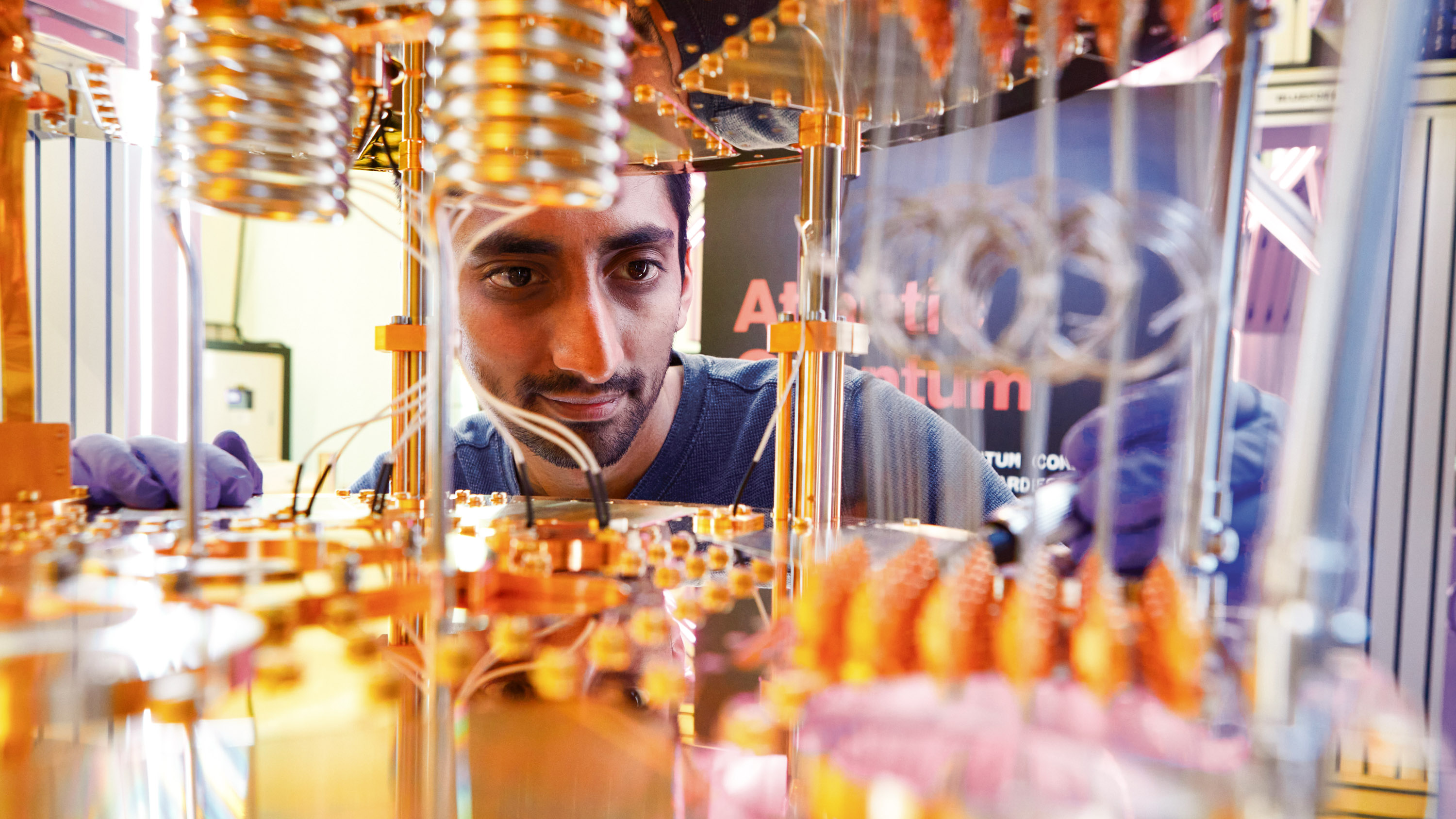Tackling two big challenges of quantum computing
Bharath Kannan, SM ’18, PhD ’22

The road to building a scalable quantum computer is strewn with hurdles, says Bharath Kannan, SM ’18, PhD ’22, cofounder and CEO of Atlantic Quantum, a Cambridge-based startup working toward that goal.
Kannan started his graduate studies at MIT in 2016, after earning his bachelor’s in physics with a focus on computer science and quantum computing at Rutgers University. While at the Institute, he worked with the Engineering Quantum Systems Group to help develop a new architecture to connect quantum processors. He and six MIT colleagues founded Atlantic Quantum after he graduated in 2022.
At Atlantic, Kannan and his team are tackling two of the biggest quantum challenges. The first: qubits are so sensitive to “noise” within their environment that physical errors occur roughly once in every 100 operations, which can make calculations unreliable. A qubit, Kannan explains, “can exist in a so-called ‘quantum superposition,’ a state where the qubit is in a combination of 0 and 1, in contrast to a classical computer, which is either a 1 or a 0.” While superposition enables calculations to be performed in a way that is not possible with classical bits, inaccuracy could wipe out any potential benefits. The second challenge is scale. Generating the complex signals required for such a computer to work would take millions of qubits, each with its own microprocessor. The sheer volume of hardware makes a functional quantum computer hard to imagine.
“To make matters even more complicated, when you try to simplify the control signal system, you tend to increase the error rate,” says Kannan. “And when you try to reduce the error rate, you typically make the circuitry and signals even more complicated, which requires even more sophisticated hardware. Approaching these problems one at a time can feel like a zero-sum game. So we decided we have to approach them both at once.”
To do that, Atlantic Quantum turned to the so-called fluxonium qubit, a new type that operates at a much lower frequency than the typical variety. The result is akin to putting on headphones: the noise is still there, but the qubit “hears” less of it. This translates into fewer errors. It also reduces the complexity and cost of electronics needed to operate the system. “It will take many years of engineering before anyone builds a useful, fault-tolerant quantum computer,” says Kannan, who was named one of MIT Technology Review’s 35 Innovators Under 35 in 2023. “But we believe our technology gives us one of the best chances.”
Keep Reading
Most Popular
How scientists traced a mysterious covid case back to six toilets
When wastewater surveillance turns into a hunt for a single infected individual, the ethics get tricky.
The problem with plug-in hybrids? Their drivers.
Plug-in hybrids are often sold as a transition to EVs, but new data from Europe shows we’re still underestimating the emissions they produce.
What’s next for generative video
OpenAI's Sora has raised the bar for AI moviemaking. Here are four things to bear in mind as we wrap our heads around what's coming.
Stay connected
Get the latest updates from
MIT Technology Review
Discover special offers, top stories, upcoming events, and more.